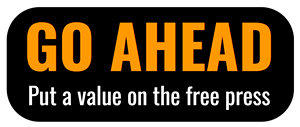My kids and I love to play dreidel. Latkes are delicious. And the blue, white and silver decorations scream my name every year.
I happen to be Catholic. I attended a Catholic school through sixth grade, I go to church on Sundays (I mean, try) and I recognize feast days and holy days of obligation. I’m Catholic, not Jewish, so why would my family celebrate the season with Hanukkah traditions?
The traditional story of Hanukkah that is told over and over is that King Antiochus IV, who ruled over ancient Israel in 168 BCE, demanded his people partake in his culture of the Syrian-Greek Empire and banned Judaism. But the Jews still wanted their traditions, including studying the Torah and celebrating Shabbat, naturally. A group of rebels called Maccabees fought back against the king and eventually drove him and his army out of Jerusalem. Celebrating the victory, an oil candle (menorah) was lit and was supposed to last just one day but burned for eight. This was a seen as a miracle, and so the eight days of Hanukkah began.
The more I read, the more I gathered that the true origins of this Jewish festival aren't crystal clear but that it also doesn't matter. Hanukkah is different from Passover and Purim.
It really doesn't have much religious significance: It's not celebrated in a synagogue, it’s celebrated at home, in some schools, with friends and with families. Hanukkah is a time for families to come together, and that is something I can get behind, regardless of my religion.
But I'm not going to lie; I was nervous about writing on a holiday I know little about, but celebrate parts of anyway. I didn't want to offend or sound insensitive, so I turned to my friend Rachel for some advice. She assured me that when it comes to Hanukkah, I am just fine giving my interpretation and own thoughts on the matter, even if I loved Hanukkah solely for the pretty decorations and chocolate gelt.
Rachel Jameton of Asotin, grew up in St. Louis, Mo. She attended Sunday School every week at Temple Emanuel where they decorated, cooked latkes and told holiday stories this time of year.
“The holiday is all about kids and family, it is not a religious celebration. The food is sweet, the candles are pretty, the presents each night are happy things. We celebrate with family and friends, not at synagogue.”
Rachel celebrates with her children at home, lighting a candle on the menorah each night of Hanukkah at sundown, reciting a blessing. Afterwards, a small gift is opened, and if it’s not a particularly busy night, during dance or drum lessons or Lego club they might eat potato latkes with sour cream and applesauce.
“Hanukkah traditions — because they are family traditions — are fluid and differ widely.”
So what are some of these Hanukkah traditions? Let’s explore.
Dreidel — A dreidel is a spinning top with four sides, each side with a different letter of the Hebrew alphabet: Nun, Gimel, Hey, and Shin. Nun stands for “nothing,” Hey stands for “half,” Gimel stands for “all,” and Shin stands for “put in.” Each play starts with an equal number of gelt (chocolates) and the game starts with each player adding one to the pot, adding another in after each turn as well. Taking turns spinning the dreidel, players take from the center pot, do nothing, or add to the pot, depending on which letter is facing up on the dreidel at the end of the spin. If you don’t have chocolate, you can play with pennies, marbles, candies, or anything you can find.
Latkes — These are essentially fried potato pancakes. An easy explanation: grate potatoes, add flour, egg, and some garlic or onion seasoning if you’d like and form potato patties. Fry in oil and serve with sour cream or applesauce.
Sufganiyah — A deep fried doughnut, filled with jelly or custard and topped with powdered sugar.
Menorah — A nine-branch candelabrum. There is a spot for a candle for each night of Hanukkah, plus the “shamash” which is used to light all other candles.
Gifts — Given each of the eight nights of Hanukkah. Size and type of gift varies depending on individual family traditions.
Colors — white and blue are are the traditional colors of Hanukkah. You can find sugar cookies decorated with white and blue frosting, white and blue banners hanging from walls and other white and blue decorations (candles, menorahs, foil-covered chocolates, etc).
If any of this sounds fun and delicious, try it out. There are many children's books about Hanukkah and reading a few is a great way to introduce the celebration to your family. Then break out the dreidel, eat some sufganiya and enjoy.
















